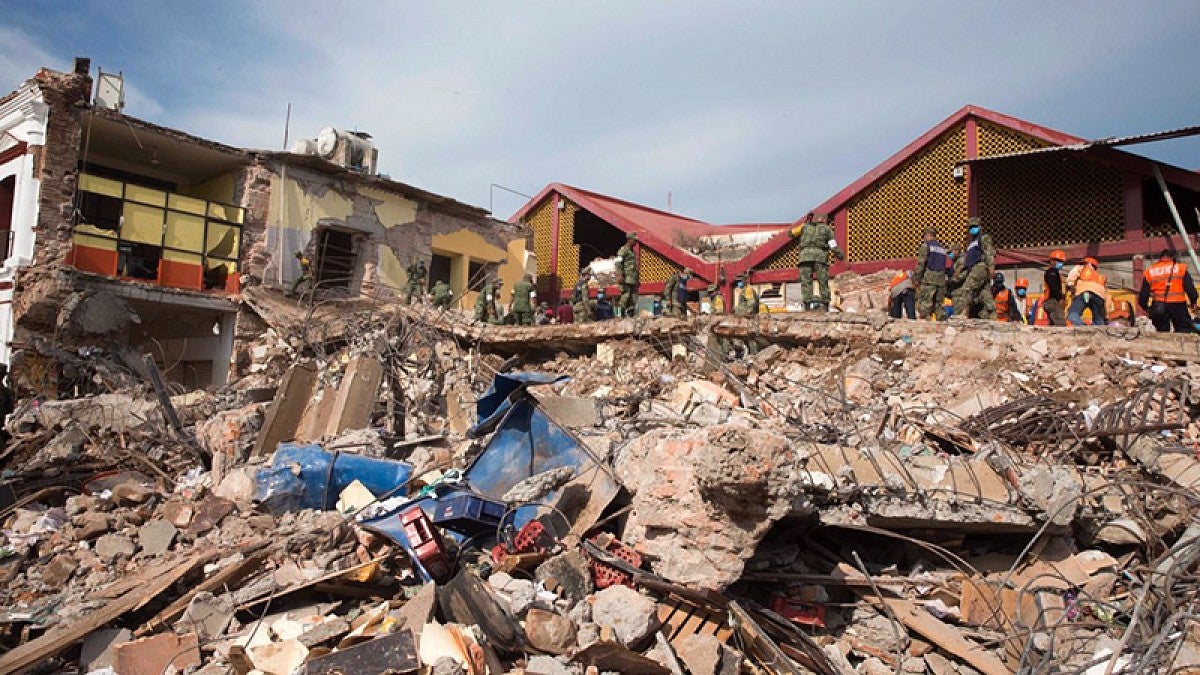When last September’s magnitude 8.2 Tehuantepec earthquake rose from the deep, scientists thought it was the expected big one in the subduction zone off Mexico’s southern coast.
After an extensive analysis, however, a 13-member research team led by Diego Melgar of the University of Oregon concluded this one was something else and may represent a potential new hazard along the Pacific Coast of Central America. The findings were published in a paper in Nature Geosciences.
“We don’t yet have an explanation on how this was possible,” said Melgar, an assistant professor in the Department of Earth Sciences. “We can only say that it contradicts the models that we have so far and indicates that we have to do more work to understand it.”
Subduction zone megaquakes generally occur near the top of where plates converge. Initially, the 2017 event was thought to be in such a location, where the Cocos ocean plate is being overridden, or subducted, by a continental plate. The zone had not had a quake of such magnitude since 1787.
The epicenter, however, was 28 miles deep in the Cocos plate, well under the overriding plate and where modeling had said a quake shouldn’t happen.
RELATED STORIES
Modeling suggests such events occur only in older and colder subduction zones, where the weight of a descending plate creates strong forces that stretch a slab’s fabric as it dives toward the mantle. The 1933 Sanriku, Japan, earthquake was one. It generated a 94-foot tsunami that killed 1,522 people and destroyed more than 7,000 homes.
The Mexican quake ruptured the descending slab and generated a 6-foot tsunami, which likely was limited in size by the angle of the overriding continental plate so close to shore, Melgar said.
“This subducting plate is still very young and warm, geologically speaking,” he said. “It really shouldn’t be breaking.”
Subduction zone ages and their temperatures relate to their distance from midocean ridges, where plates originate in temperatures of some 2,552 degrees Fahrenheit, Melgar said. The 25-million-year-old Cocos subduction zone is 600 miles from the midocean ridge where it began. Japan’s subduction zone is much further from the ridge and 130 million years old.
Temperatures cool as plates move outward. Tension-related earthquakes, the researchers noted, have been restricted to older plates with temperatures that are cooler than 1,202 degrees Fahrenheit.
It may be, Melgar’s team has proposed, that seawater leaking into the stressed Cocos plate is accelerating the cooling, making it susceptible to tension earthquakes previously seen only in older and colder locations.
It’s also possible, the researchers noted, that the 8.0 magnitude 1933 Oaxaca earthquake, previously thought to be in a traditional subduction zone event, was instead similar to the one that struck last year.
If such water-driven cooling is possible, it could suggest other areas, especially from Guatemala southward in Central America, and the U.S. West Coast are susceptible to tension-zone earthquakes, Melgar said.
The Cascadia subduction zone, from Northern California to British Columbia, is 15 million years old and warmer than the similar geology along the Mexican-Central America coastlines, but it could still be at risk.
Building codes and hazard maps should reflect the potential danger, he added.
“Our knowledge of these places where large earthquakes happen is still imperfect,” Melgar said. “We can still be surprised. We need to think more carefully when we make hazard and warning maps. We still need to do a lot of work to be able to provide people with very accurate information about what they can expect in terms of shaking and in terms of tsunami hazard.”
Melgar’s team included researchers from the National Autonomous University of Mexico, Kyoto University in Japan, Romanian Academy of Bucharest, Romania, University of California, San Diego, and Wuhan University in China. The National Science Foundation and government agencies in Japan and Romania supported the project.
—By Jim Barlow, University Communications


